Spartans are innovating batteries, electronics, composite materials and more to push electric vehicles farther while training the nation’s future workforce
This July, the United States Army announced a new $9 million initiative it’s pursuing with Michigan State University to make electric autonomous vehicles safer, smarter and more dependable.
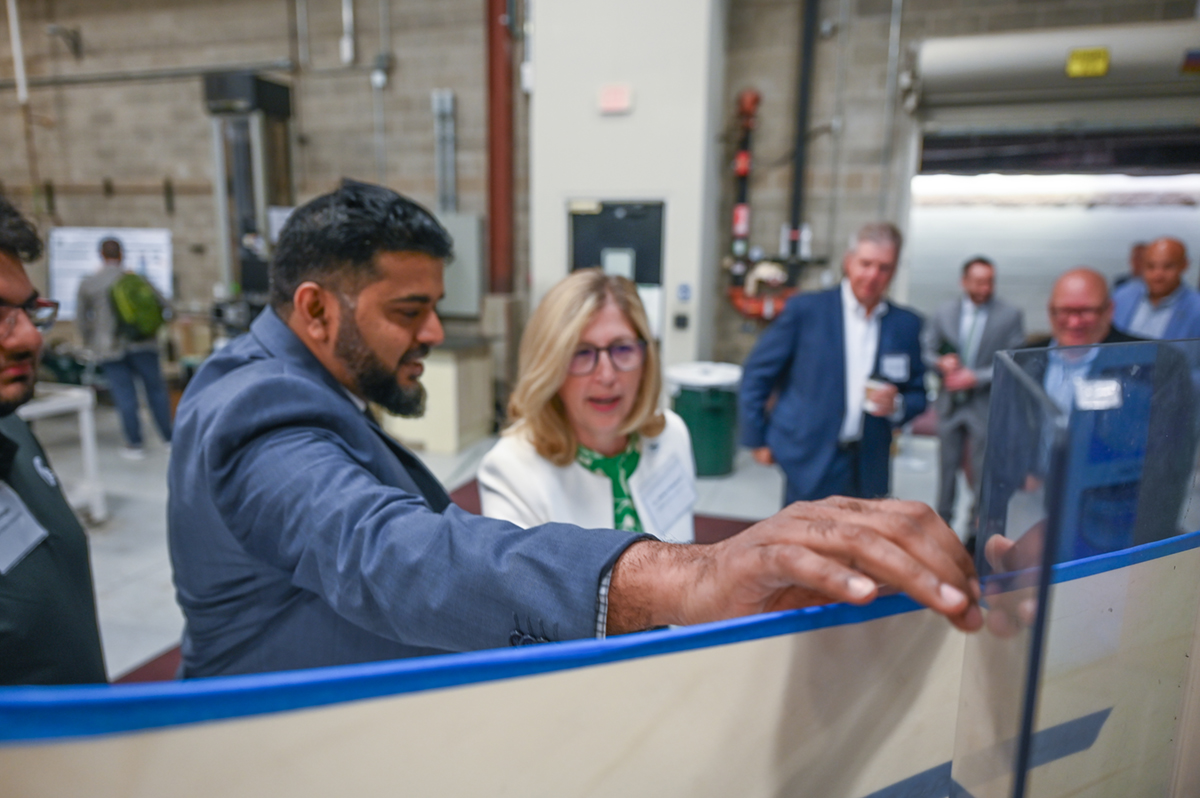
With support from the Army’s Ground Vehicle Systems Center, or GVSC, Spartan engineers are working to create every advantage they can for vehicles that will serve our country’s service members. But it doesn’t take long to see how these innovations will benefit civilians, too.
In fact, the team will first demonstrate its new ideas, designs and technologies on a commercially available passenger car before disseminating these advances to other vehicles.
For today’s average driver, perhaps the biggest problem MSU’s researchers are working to solve is related to range anxiety, the fear that electric vehicles, or EVs, will run out of charge before reaching their destination.
“If you were to ask 10 electric vehicle owners what is the single biggest issue they have with their car, I would bet eight out of 10 would say range anxiety,” says Satish Udpa, a University Distinguished Professor in the Department of Electrical and Computer Engineering.
Udpa is a leader of the GVSC project and an EV owner. He’s been impressed with how well his vehicle keeps him informed of his charge level and nearby charging stations, but it doesn’t fully alleviate the stress.
“If I have to go to Chicago, I’m still going to worry about where to charge,” he says. “There’s a level of anxiety that you don’t associate with vehicles powered by internal combustion engines.”
And range anxiety doesn’t just affect current drivers. According to industry surveys, it’s the top barrier outside of cost for consumers considering the switch to EVs, even as manufacturers and the government are working to accelerate that transition.
“The most impactful outcome of this work is the development of the nation’s future workforce, which is going to ensure the state’s and nation’s competitiveness and leadership for generations to come.”- Mahmood Haq, associate professor in the Department of Civil and Environmental Engineering
Although there are a lot of companies working on solutions to range anxiety, Udpa says they’re dealing with different parts of the problem separately.
Some companies are developing better batteries, for example. Others are focused on improving other onboard systems or making lighter-weight materials to stretch more range out of a single charge. That makes it challenging, if not outright risky, for automakers to attempt to bring multiple solutions to a single vehicle.
“When you build solutions in silos, sometimes the parts don’t fit together,” says Judd Herzer, who became the director of MSU Mobility in August. “By having the ability to do it all at Michigan State, we believe we can solve problems differently and solve them better.”
There are more than a dozen Spartan faculty collaborating on this project to explore and drive innovations in battery chemistry, electrical systems, the materials that make a car and more.
Spartan graduate and undergraduate students will also play a critical role in the projects, helping develop these advances and determining how to implement them on real vehicles.
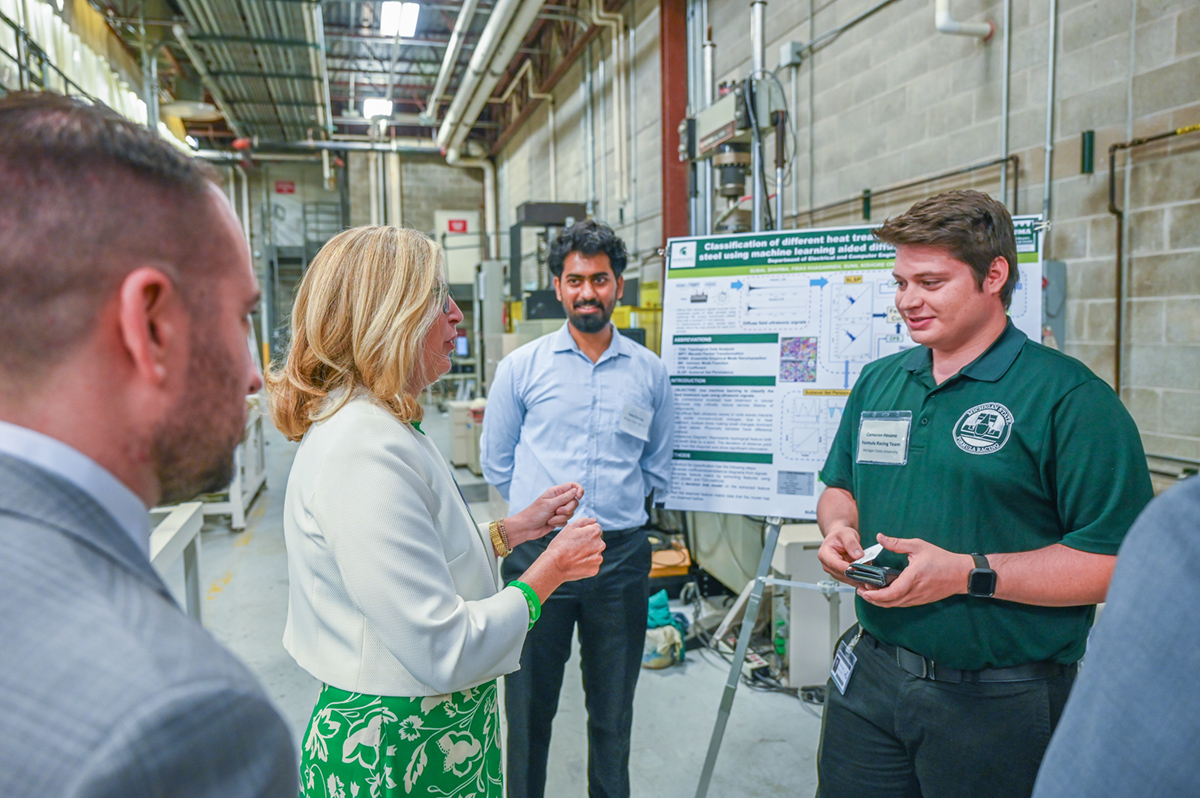
“The most impactful outcome of this work is the development of the nation’s future workforce, which is going to ensure the state’s and nation’s competitiveness and leadership for generations to come,” says Mahmood Haq, another leader of the GVSC grant and an associate professor in the Department of Civil and Environmental Engineering.
“We’ve chosen to look at the issue in its totality. We’re considering all aspects,” says Udpa. “An orchestra works together by relying on everyone in different sections doing their jobs. That’s the approach we’re taking here.”
The resulting symphony will be a fully autonomous, fully electric and lightweight all-terrain vehicle. Although it’s commissioned by the GVSC, it’s designed to be an inspiring listen for many audiences: drivers, students and other MSU partners and stakeholders, including the U.S. auto industry.
It’s a composition that’s somehow both avant-garde and classical. It’s as much a new realization of Spartan potential as it is a reminder of who we are.
“MSU has a certain type of culture and a certain type of ambition to be the best at this,” Herzer says. “There are a lot of other areas we could focus on, but we recognize how critical mobility is to Michigan’s — and the nation’s — economic future.”
“Translating technologies to the marketplace is part of our DNA,” Udpa says. “That’s been the case since 1855, and it will continue to be the case.”
MSU’s electric potential
When it comes to batteries’ shortcomings, it’s hard to imagine anyone better equipped to overcome them than Chengcheng Fang, an assistant professor in the Department of Chemical Engineering and Materials Science.

Last year, Fang was named one of the world’s leading innovators under the age of 35 by the magazine MIT Technology Review. Before joining MSU in 2020, she was trained as a part of a national collaboration called the Battery500 Consortium.
The consortium also included scientists who were awarded the Nobel Prize in Chemistry for their development of lithium-ion batteries in the late 20th century.
Now, leading her own lab, Fang says MSU is an ideal setting for helping usher in the future of battery technology.
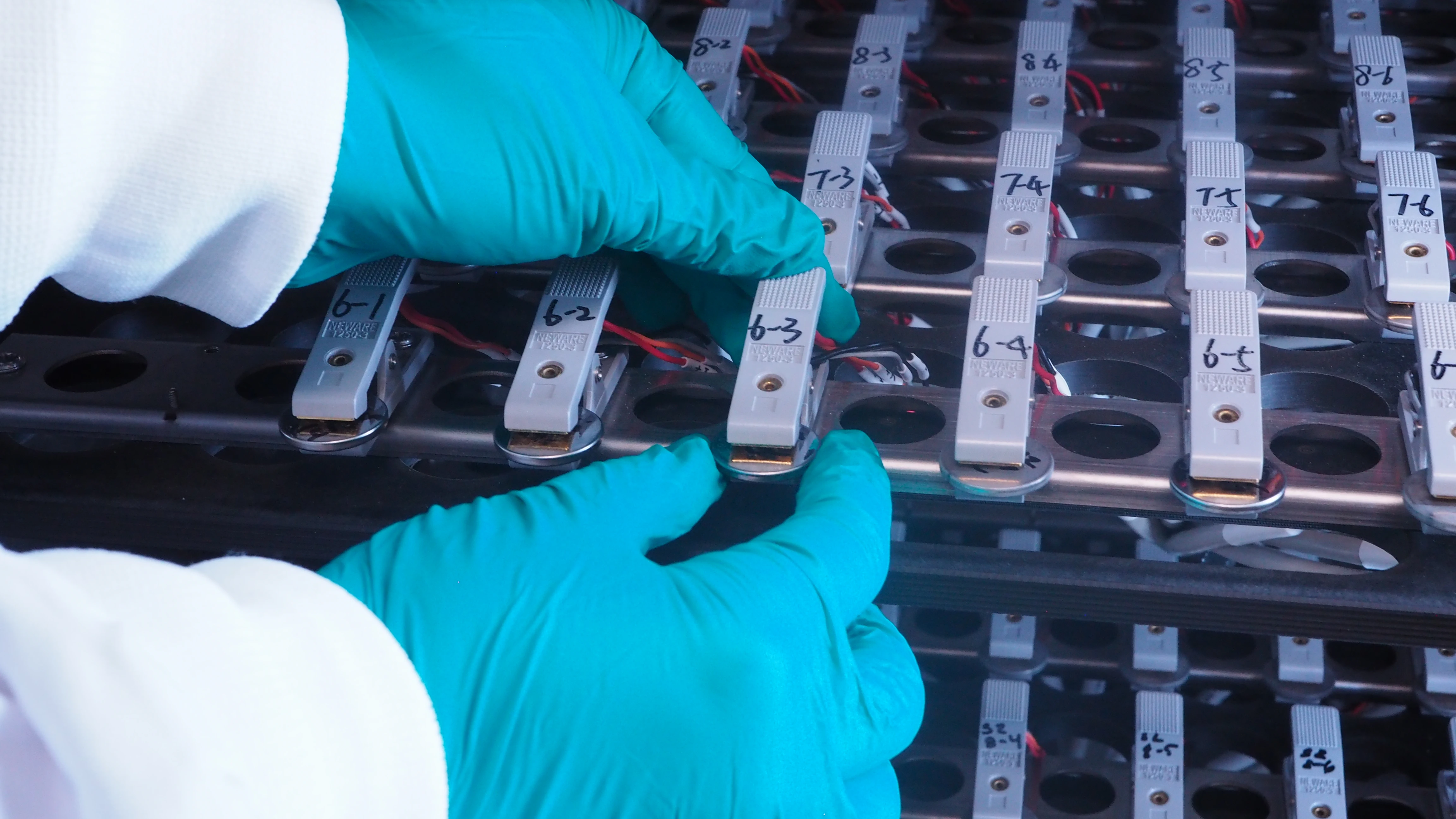
“At MSU, we have a very strong research infrastructure, top-level students, top-end characterization tools, and we know the high standards of the industry,” says Fang, who also has an ongoing project with General Motors. “That’s really important for how we train our students and how we direct our research.”
Fang’s approach is a microcosm of the entire collaboration. Just as the MSU team is advancing on range anxiety from all fronts, her lab is looking for every opportunity to boost battery performance.
“My passion is making the technology better to actually bridge the gap between the lab and application,” Fang says. “We’re trying to innovate many parts inside the battery.”
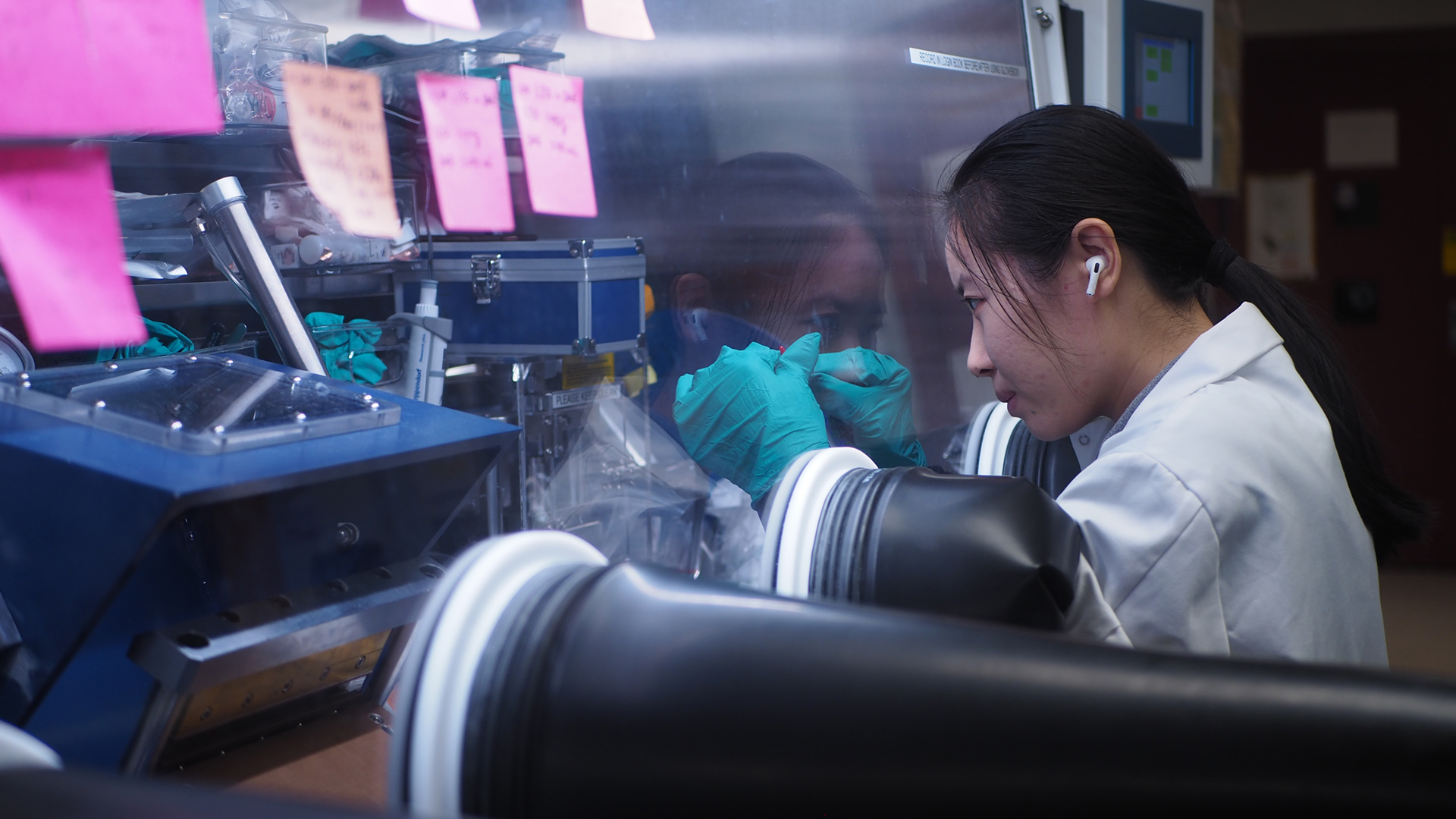
That includes what’s been called the “holy grail” of battery research in developing new chemistries that could double the range of current EVs. Another project is working to fortify batteries so that their performance doesn’t falter in frigid temperatures, like those experienced during Michigan’s winters.
Another idea, building battery packs that would deliver higher voltages and lower currents than what vehicles use now, provides other opportunities for improvements, especially as it dovetails with MSU’s power electronics research.
“Power electronics are like an intermediary between the source of energy and the load that uses the energy,” says Woongkul “Matt” Lee, an assistant professor in the Department of Electrical and Computer Engineering. “So, we want them to be very efficient. We want to produce minimal energy loss during this power conversion process.”
Lee also is a faculty member of the Electric Machines and Power Electronics Research, or EMPowER, Laboratory at MSU.
Power electronics ensure that the different systems in a vehicle are getting the electric energy they need in a way they can best use it — with the appropriate voltage and current, for example.
If future vehicle batteries could double the voltage of what’s used in today’s EVs, they could deliver the same amount of power with half the current.
“And power loss is coming from current. If we cut the current by half, the loss is reduced by 75%,” Lee says. “Mathematically, that’s a very easy way to boost efficiency.”
Making the math work in a real vehicle is much more challenging, but it’s a challenge Lee and his team take pride in confronting. They believe that embracing complexity within the confines of power electronics will simplify obstacles elsewhere in the vehicle.
He, like Fang, has a body of work that’s gained interest and support from corporate partners to justify that belief. In his lab, for example, he’s got multiple generations of prototypes demonstrating a new architecture his team has developed over the past several years to improve components called inverters.

Inverters live between batteries and motors, converting direct current signals to alternating currents (perhaps a helpful mnemonic device is that inverters go DC to AC, the inverse of the order chosen by the legendary Australian rock group AC/DC).
So, Lee and his team would have been developing this more efficient inverter without the new grant from the GVSC. What the grant is now doing, though, is putting Lee’s work on a table, along with developments from more than a dozen different labs across campus, to work toward a common goal.
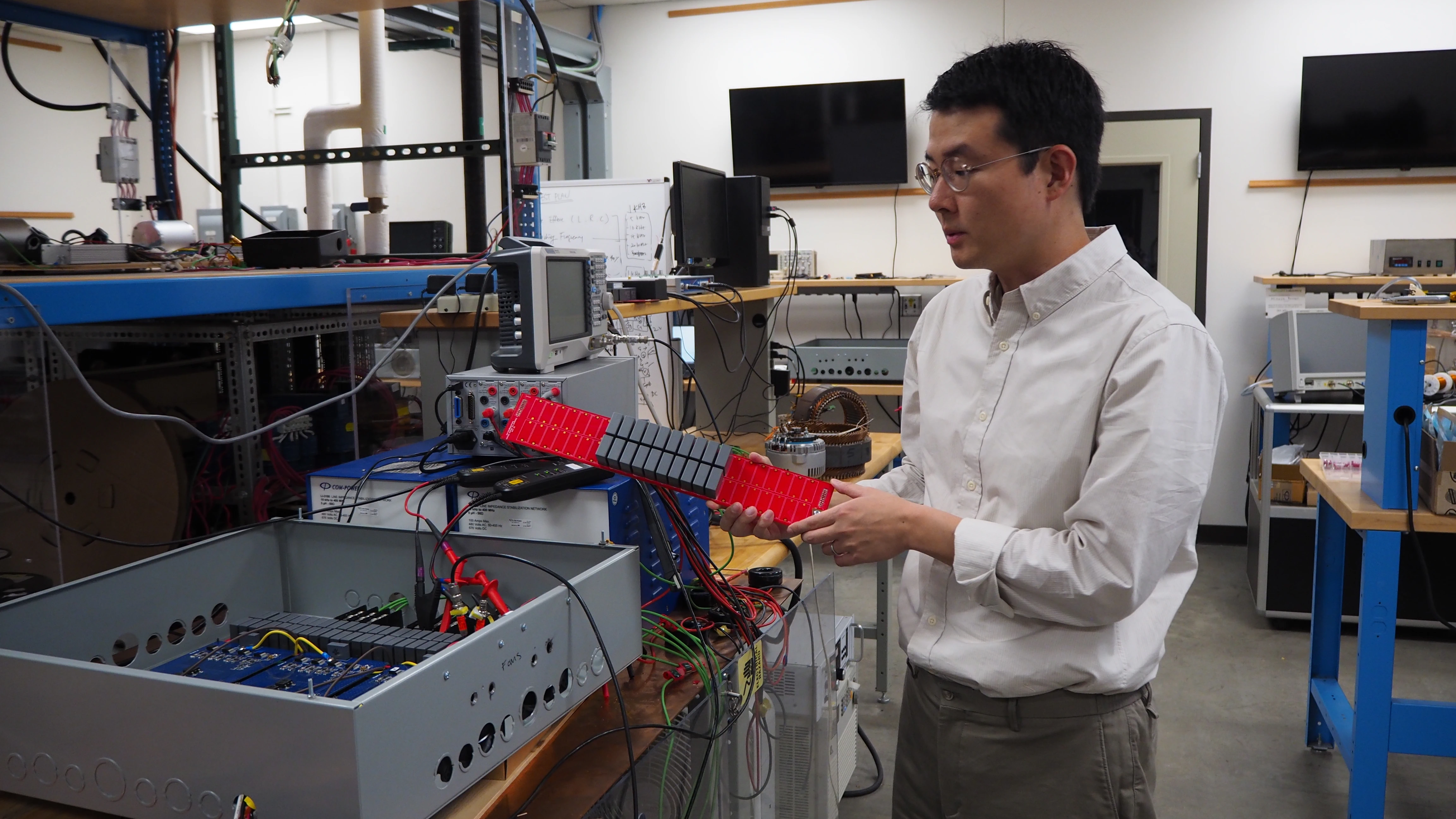
“I had never been on this kind of big project before with multiple investigators from different areas,” Lee says. “It’s exciting to see what our colleagues are capable of, and it really inspires new ways of solving problems.”
This collaboration is enabling ideas, like doubling the battery voltage to minimize losses in power electronics, to take flight. Interestingly, and importantly, these ideas are also allowing EVs to shed weight.
EVs are currently much heavier than their counterparts powered by internal combustion engines, meaning they must expend more energy to move a vehicle the same distance.
Innovations like being able to operate at lower currents would mean manufacturers could use thinner, lighter wires. And more efficient inverters can operate with fewer hefty components.
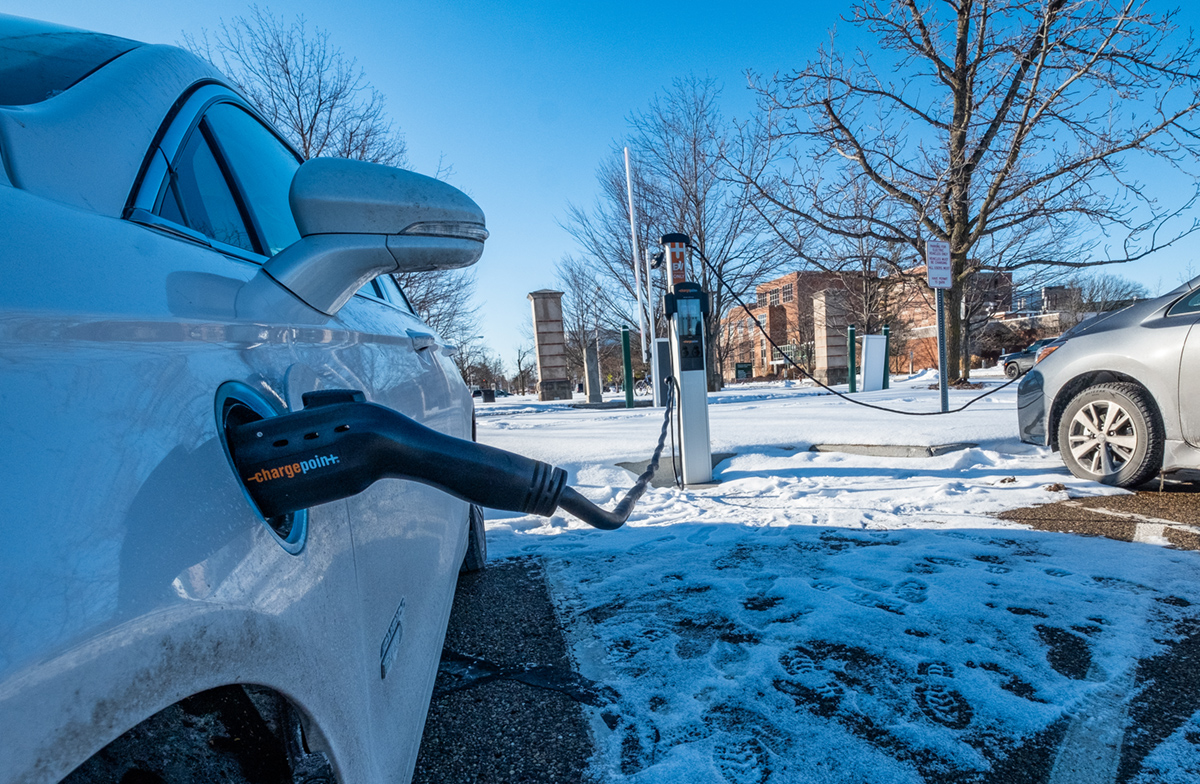
Even dropping a few grams from batteries would add up. Despite coming in a single package, car batteries are currently made up of thousands of individual cells, about the size of C batteries, wired together.
“It’s interesting because, working with industry, they talk a lot about increasing mileage per charge, while the Army is emphasizing making things lightweight,” Fang says. “But I think we’re really talking about the same thing.”
Making composites worth their weight (reduction)

Mahmood Haq has been interested in “lightweighting” vehicles since before EVs took off.
Haq is the director of the Composite Vehicle Research Center, or CVRC, at MSU, which was established in 2006. He’s been around for most of its existence, earning his master’s degree in 2007 from MSU, then staying here to earn his doctorate and start his faculty career.
In addition to roles as director and associate professor in the Department of Civil and Environmental Engineering, Haq also has appointments in the Department of Mechanical Engineering, the Department of Electrical and Computer Engineering and the Department of Chemical Engineering and Materials Science.
Working with the CVRC and its stakeholders — a list that has long included the U.S. Army as well as numerous companies over the years — he has a unique appreciation for how interconnected weight and performance are.
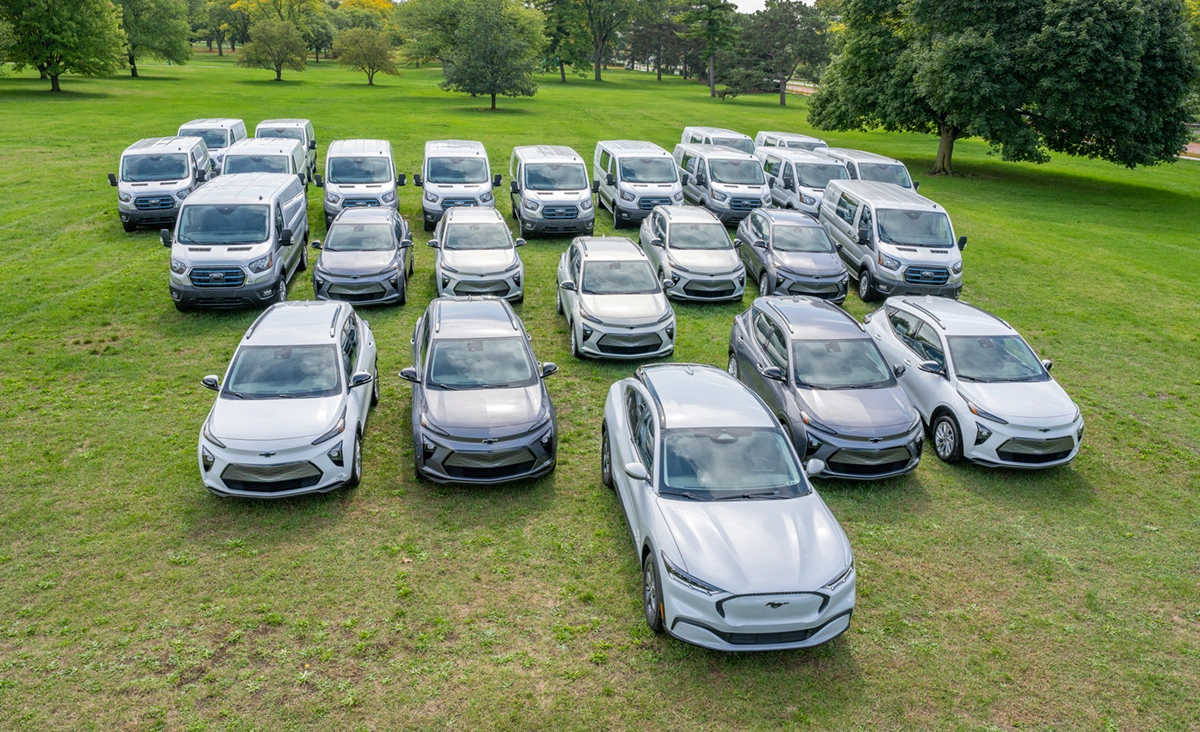
He knows that reducing the weight of a vehicle with an internal combustion engine by 10% can provide a 6% to 8% boost in fuel economy. When asked if drivers could expect similar figures to apply to the weight and range of electric vehicles, he pauses and thinks.
He hasn’t seen anyone officially crunch the numbers, he says, but he believes they would be similar. But the question doesn’t capture the full scope of lightweighting’s unique potential in EVs.
“For whatever weight you reduce, you increase the range, or you can also add more batteries,” Haq points out. That is, you could trade the weight savings to add more juice.
“So, it can feel like going in a circular loop,” Haq says. “But it’s a good problem to have as we are going to achieve the highest overall efficiency.”
It’s easy to see how this perspective, one that sees problems as opportunities, helps him as a leader of the Composite Vehicle Research Center, the GVSC project and his own research lab.
“We can be the ones who take risks, we can remove the fear of failure and the fear of the unknown.”- Mahmood Haq, associate professor in the Department of Civil and Environmental Engineering
For his part, Haq’s research focuses on composite materials that combine carbon fibers and polymers into lightweight material. These composites can be many times stronger than steel at a fraction of the weight.
“The biggest advantage of using composite materials is that we can tailor them to the desired mechanical properties,” Haq says. “Furthermore, we are using advanced manufacturing techniques such as robotic fiber placement and additive manufacturing to achieve our lightweighting goals.”
But composites also cost more than steel and other metals used widely in passenger vehicles.
So, Haq and his team have become experts in integrating metals with composites. That way, manufacturers can use the composites where they get the highest return on investment.
The Spartan team is also working to make composites multifunctional. That includes integrating inexpensive sensors that can detect when and where the material is failing, as well as using reversible adhesives to enable easy repairs.
“We are also embedding sensors and radio-frequency antennas inside the composites for secure communication and health monitoring,” Haq says. “We are doing a systems-level approach to drive innovation.”
Within minutes of speaking with Haq, it’s clear that he loves not only what he does, but where he does it. He’s proud to be part of a team whose innovations support the Army and the auto industry. Getting to develop those at a leading research university like MSU is a perfect fit for him for a couple of reasons.
“One is very close to my heart and that’s the students, the future of the country,” Haq says.
Students not only help drive progress in the lab, but they’ll also be responsible for shepherding those advances into the real world as they graduate and get jobs.
Based on history, most of the jobs will be in Michigan. Thus, the way Haq sees it, MSU has a unique role to play in maintaining Michigan’s leadership in mobility.
Another attractive feature about working at MSU is something Udpa and Herzer discussed earlier: Michigan State’s culture and ambition allow it to approach problems differently.
“We can be the ones who take risks, we can remove the fear of failure and the fear of the unknown to help maintain the leadership and competitiveness of our defense forces and the auto industry,” Haq says. “At MSU, our passion is making game-changing, transformative technologies and showing the art of the possible.”
This article was originally written by MSU Today
About the MSU Innovation Center:
The MSU Innovation Center is dedicated to fostering innovation, research commercialization, and entrepreneurial activities from the research and discovery happening across our campus every day. We act as the primary interface for researchers aiming to see their research applied to solving real-world problems and making the world a better place to live. We aim to empower faculty, researchers, and students within our community of scholars by providing them with the knowledge, skills, and opportunities to bring their discoveries to the forefront. Through strategic collaborations with the private sector, we aim to amplify the impact of faculty research and drive economic growth while positively impacting society. We foster mutually beneficial, long-term relationships with the private sector through corporate-sponsored research collaborations, technology licensing discussions, and support for faculty entrepreneurs to support the establishment of startup companies.
Is your company ready to partner with MSU’s researchers on the next EV innovation? Click Here.
